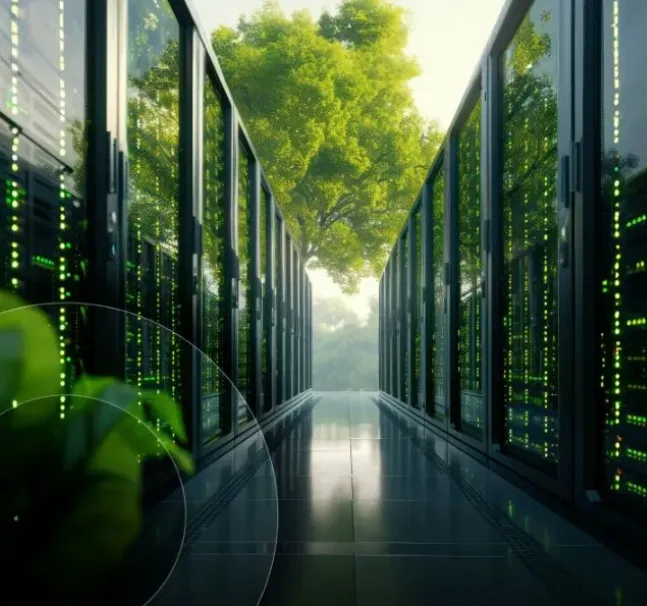As artificial intelligence (AI) continues to evolve rapidly, data centres are facing mounting demands for greater infrastructure performance and efficiency. This sponsored interview with Mohammad Royapoor, Head of R&D at RED Engineering Design, delves into the challenges and opportunities in optimizing data centre operations while balancing sustainability goals.
What Does Optimization Mean for Data Centre Design?
Optimization refers to improving efficiency within a given set of constraints—essentially making systems as effective as possible. While the process can involve complex mathematical techniques, the aim remains simple: enhancing performance.
In the case of data centres, optimization is crucial due to the complex systems they integrate. These facilities house everything from power distribution to cooling and computational infrastructure, making optimization a continuous challenge with vast possibilities.
AI has become a game-changer in how data centres are designed and managed. With AI-powered solutions, operators can refine layouts, improve cooling strategies, and achieve higher efficiency. As a result, making data centres more sustainable and resource-efficient is now an optimization challenge. By adopting a comprehensive approach, operators can fine-tune their infrastructure to maximize performance while reducing environmental impact.
Can AI and Net-Zero Carbon Targets Coexist?
The increasing energy demands of AI, particularly in training models, have sparked concerns about how this could delay the tech sector’s push toward net-zero carbon emissions. Many companies are acknowledging the substantial energy consumption required for AI, and there’s a growing worry that AI’s energy-intensive nature could hinder efforts to meet carbon reduction targets.
Balancing AI’s rapid advancement with the objective of achieving net-zero emissions presents a significant challenge. The solution lies in optimizing infrastructure and deploying the most efficient technologies to minimize AI’s environmental footprint. This includes implementing advanced cooling solutions, adaptable data centre designs, and systems that optimize energy use and water management. By integrating sustainability practices early on, the industry can align AI’s progress with long-term carbon reduction goals.
Although meeting sustainability targets remains complex, abandoning them is not an option. If net-zero targets need to shift from 2030 to 2035, it’s essential that gradual progress continues, with reduced operational carbon and water consumption at each stage.
Key Design Changes for AI-Ready Data Centres
The rate at which data centres are densifying is accelerating. We’re now seeing workloads consume up to 40 kW per rack, with cutting-edge hardware like NVIDIA’s achieving as much as 120 kW per rack. This could soon rise to 300 kW, fundamentally altering data centre infrastructure.
With such high power consumption, liquid cooling has moved from being an optional enhancement to an absolute necessity. Traditional air-cooling methods can no longer manage the heat output from these high-power systems. Additionally, power management has become a critical concern, as the higher the consumption, the more important power quality becomes. This affects everything from power generation on-site to distribution efficiency.
AI workloads bring another layer of complexity. Unlike traditional computing loads, AI introduces unpredictable, variable power demands. This shift impacts load balancing, harmonics, and overall system distribution, requiring a complete rethinking of data centre design.
The impact of AI extends beyond engineering. With chips dissipating heat at levels comparable to nuclear reactors, every aspect of the infrastructure must be optimized to handle these demands. Designing data centres to support the next generation of computational workloads requires a holistic and global approach.
Are We Ready for Liquid-Cooled Data Centres?
Leading an R&D team, I’m continually amazed by the rapid advancements in cooling technologies. From advanced heat exchangers to direct-to-chip and immersion cooling systems, the market is brimming with innovation.
However, the widespread transition to liquid cooling is still in its early stages. While some of the most advanced computational facilities are emerging in the US, Europe and the Asia-Pacific region have yet to fully embrace these technologies.
Liquid cooling poses new challenges. It requires a departure from traditional data centre designs, introducing operational complexities and the need for a new approach to resilience and redundancy. Despite these challenges, many of the most promising technologies are in development, and it won’t be long before they are deployed in data centres across Europe and the Asia-Pacific region.
At RED Engineering Design, we are actively addressing these challenges, preparing for the future of AI-driven data centres.
Managing Future Uncertainties in Data Centre Design
The rapid pace of change in computational science means that data centre designers must plan for a range of uncertainties. To stay ahead, we can learn from other industries—such as economics, pharmaceuticals, and energy—where uncertainty is systematically addressed through scenario planning.
One project in the Asia-Pacific region required us to completely rethink the initial design because the original assumptions didn’t account for the broad range of AI applications needed. Not all AI workloads require the most advanced processors. Many can be supported by emerging chip technologies that provide excellent performance without the high costs or supply chain challenges associated with premium processors.
By taking a broader approach, data centre operators can plan for multiple future scenarios. This might involve designing facilities specifically for next-generation AI workloads, or creating flexible infrastructures that can accommodate a mix of AI and conventional computing, as well as potential future technologies like quantum computing.
Conventional computing is expected to double by 2030 due to the massive infrastructure needs of AI. This means data centre operators must have candid discussions about their priorities: Should they focus on building ultra-high-density AI facilities, or should they design infrastructure that supports both AI and traditional computing?
Conclusion
The design and operation of data centres are being transformed by AI’s rapid evolution. As demand for computing power rises, optimizing infrastructure has become crucial for balancing energy efficiency, performance, and sustainability. While the road to achieving net-zero carbon emissions may be challenging, data centres can embrace new technologies and approaches to ensure they meet both operational and environmental goals. With the right strategies in place, data centres can thrive in the age of AI, supporting future advancements while minimizing their environmental footprint.







